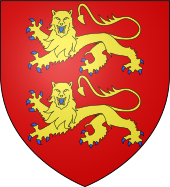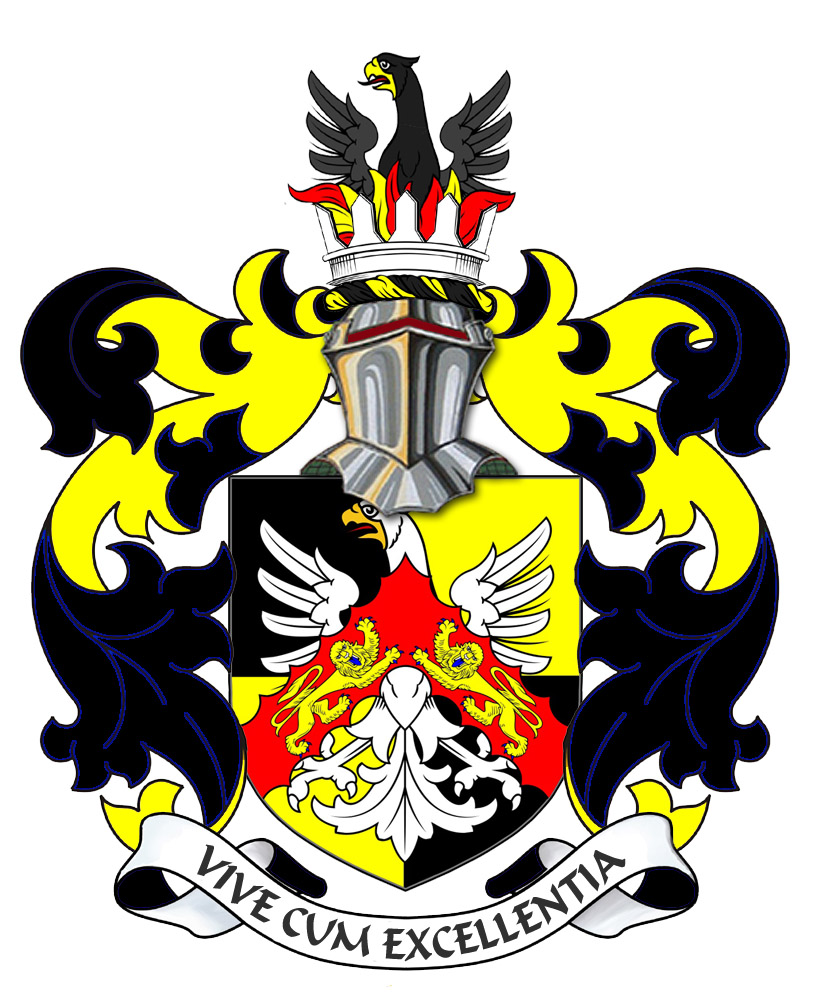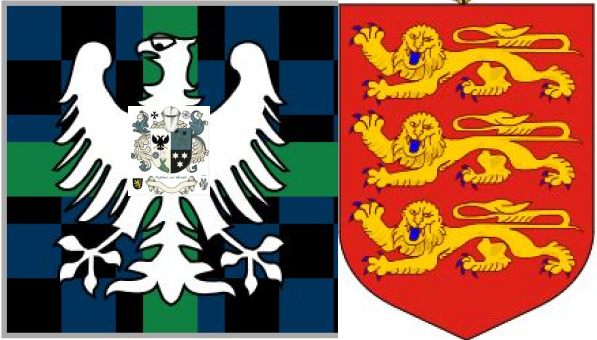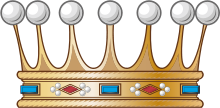


A Funny Thing Happened On the Way to the Fiefdom ? By: George Mentz, JD MBA – Seigneur of Fief Blondel I wanted to share an interesting story which is a lesson in ancient international civil law. Every few years, I had discovered there may be a sale of the rights of Ancient Fiefs (Feudal Lordships). At an obscure auction, I accidently won the bidding and was able to secure ancient Seigniorial Fief Rights. A Noble Count recently transferred his Ancient Feudal Title over to me in the Royal Courts of the Bailiwick of Guernsey. By acquisition of the heritable title, you then have a registered property right to style yourself as a Dame or Seigneur under the laws of the Bailiwick of Guernsey. Further, the fief is a territory of land scattered about southeastern Guernsey of several hundred acres where the Feudal Lord may own rights to common, heriditments, advowson, hunting, emoluments, fishing, rights to light, mining, court baron, liberties, dignities, foreshore, seasted, rents, homages, water rights and more. Since Guernsey is a Crown Holding, nobody is really sure what the Lord Seigneur of a Norman Fief owns anymore, but the Dame or Seigneurs have traditionally held many rights related to thier respective territories over the last 1000 years including feudal courts.
The Fief de Thomas Blondel of the “Norman Channel Island of Guernsey” is somewhere between 840 years old and 577 years old depending on how you date the grant of the Ancient Norman Fief. In 12th Century Kingdom of France, the term Baron was generally applied to all lords or seigneurs possessing an important fief, but later in the 13th century the title of Baron meant that the holder held his Fief directly from the Crown and was thus more important than a count since counts were typically vassals. The Seigneury of the Fief Blondel is a small feudal-fiefdom of noble history originally included in the grants to “Rollo the Famous Viking and 1st Duke of Normandy” by Grant of “Charles I” of France to prevent further invasions and sacking of France. The Fiefs territorial boundaries are located in the Southwest portion of Guernsey Island. The island of Guernsey is still controlled by “Crown” or presently the Queen of England. Guernsey is not a part of the UK nor the EU; however, Guernsey is a Crown Dependency maintaining its own ancient feudal laws which have a great Viking, English, and French history. Much like Louisiana in the USA where I attended law school, Guernsey has a multifaceted mix of French and English Law. The Fief is composed of a scattered territory on the island including several beach areas that constitutes a tiny feudal “baronnie“ or fiefdom. To acquire the Ancient Feudal Norman Fief, a buyer’s lawyers must go to Royal Court and pay the fees of: Treizième duty to the Crown or Conge payment to Her Majesty while paying other fees to the HM Greffier /Greffe (Clerk’s) fees, and Jurats fees. This is done to obtain (HM) Her Majesty’s Royal Court’s conveyance permit and registration. The Fief Blondel is held directly from the Crown historically as a free and noble fief and actually contains within it a dependency Fief called the Fief a Eperon. The territory of the Fief lies in both St Peter-in-the-Wood and Torteval Counties or Parishes of the Island of Guernsey The Fief of Blondel has a special history as the legend states that King Richard I was jailed in Germany at the old Castle Dürnsteinand held for ransom in 1192AD. A Troubadour named Blondel found and helped release King Richard to freedom. To this day, the legend stands that the King awarded the Blondel family the Island’s Blondel Fief. Other interesting history is that the citizen’s and Seigneurs of the Fiefs of Guernsey hold the privilege of neutrality from the Vatican Papal Bull by Pope Sixtus from about the year 1483. The Papal Bull may still be effective today. The Papal Bull says that anyone who harms an islander would be excommunicated. Further, Guernsey is one of the few UK crown possessions occupied and fortified by Germany during WWII and later liberated by the Allies. The other fascinating aspect of the “Fief de Blondel” is that it contains a few areas of beachhead and foreshore. To this day, international law states that the Feudal Lord of the Fief or “The Seigneur” still has ownership rights to shorelines, seasted, accretion, fishing, treasure, shipwrecks adjacent to their fiefs, and even seaweed rights. One recent case paid the Seigneur and investors 10 Million pounds for foreshore and development rights. The Fief Blondel also comes with the historical right of a dinner to be provided by the rulers of a neighboring and famous Fief of Lihou. The Fief also comes with the ancient customary right to conduct feudal courts on small disputes. Since the status of Seigneur has been abolished in France for over 200 years, The Crown Dependency of Guernsey is one of the few places in the world where the legal status of a Fief & the legal rights to be Styled a Dame or Seigneur still exists. The Feudal Dues Law of 1980 Guernsey When acquiring a feudal title, it is always best to hire great lawyers who have skills in various languages as this Fief was registered in the French language under the ancient customs of local lawyers and of Normandy. https://www.collascrill.com/news/updates/guernsey-property-update-february/ To view the Historical Fiefs of Guernsey on a Map, there was a digital map created recently: http://fiefs.digimap.gg/ To this day, when property is registered, the description of the transfer would still contain the Fief name in which the property resides.
|
Seigneur de la Fief of Blondel Lord Baron Mentz of Fief Blondel Geurnsey Crown Dependency Seigneur Fief of Blondel George Mentz Lord Baron of Fiefdom Blondel Freiherr of Fief Thomas Blondel Feudal Lord of Baronnie - Noble Fief Barony Friherre > A Funny Think Happened On the Way to the Fief Seigneurs and Dames Travel Research Lord Paramount Feudal Barons The Seigneur Order Patron George Mentz Charter of Liberties Deed & Title Fief Blondel Islands Viking Kingdom Fief Worship Fiefs of the Islands ECS Extended Continental Shelf Styles and Dignities Territorial Waters Blondel Privy Seal Fief Bouvees of Fief Thomas Blondel Guernsey Court of Chief Pleas Fief Court Arms Motto Flower Fief de l'Eperon La Genouinne Kingdom of West Francia Fief DuQuemin Bouvée Phlipot Pain Bouvée Torquetil Bouvée Bourgeon Bailiwick of Ennerdale Channel Island History Fief Direct from the Crown A Funny Think Happened On the Way to the Fief Guernsey Bailiwick of Guernsey - Crown Dependency Confederation des Iles Anglo-Normandes Sovereignty Papal Bull Research Links Norse Normandy Order of the Genet Order of the Genet Order of the Star Est. 1022 Knights of theThistle of Bourbon Count of Anjou Fief Rights Blondel and King Richard Press Carnival Manorial Incidents Appointments of Seigneurs Store Portelet Beach Roquaine Bay Neustrasia Columbier Dovecote Fief Blondel Merchandise Fief Blondel Beaches Islands Foreshore Events Fiefs For Sale Sold Lords of Normandy Fief Coin Viscounts de Contentin Fief Blondel Map Feudal Guernsey Titles Board of Trustees The Feudal System Hereditaments Chancellor Flag & Arms Fief Videos Guernsey Castle Sark Contact Advowson Site Map Disclaimer Freiherr Livres de perchage Lord Baron Longford Income Tax Guernsey Valliscaulian Order Saint Benedict of the Celestines Society of Divine Compassion Dictionary Count of Mortain Seigneur de Saint-Sauveur Seigneur of Fief Ansquetil Top Success Books Datuk Seri George Mentz Order St. Benedict OSB Celestines Order of the Iron Crown Order of the White Falcon Colonel Mentz Order Red Eagle Order St. Louis Order Holy Ghost Order of Saint Anthony Order of the Black Swan Order of St Columban Order of the Iron Helmet Livonian Brothers of the Sword Fief treizième and Direct from Crown Valuation Fief Blondel Prince of Annaly Teffia
Feudal Lord of the Fief Blondel of the Nordic Channel Islands Guernsey Est.
1179
Feudalherr - Fief Blondel von der Nordischen Insel Guernsey Est. 1179
New York Gazette - Magazine of Wall Street -
George Mentz -
George Mentz - Aspen Commission - Mentz Arms
Counselor George Mentz Esq. - Seigneur Feif BlondelBaron Annaly Baron Moyashel Grants to Delvin About Longford Styles and Dignities The Seigneur Court Barons Fiefs of the Islands Longford Map The Island Lords Market & Fair Fief Worship Channel Island History Fief Blondel Lord Baron Longford Fief Rights Fief Blondel Merchandise Events Blondel and King Richard Fief Coin Feudal Guernsey Titles The Feudal System Flag & Arms Castle Site Map Disclaimer Blondel Myth DictionaryMentz Scholarship Program 101 Million Donation - Order of the Genet Knighthood |





George Mentz Education -
Commissioner George Mentz
-
https://finance.yahoo.com/news/commissioner-george-mentz-clinches-influencer-180000705.html
-
George Mentz News -
George Mentz Net Worth - George Mentz Noble Tilte -
George Mentz -
George Mentz Trump Commissioner -
George Mentz Freiherren Count Baron -
George Mentz Global Economic Forum -
George Mentz Donates Millions

